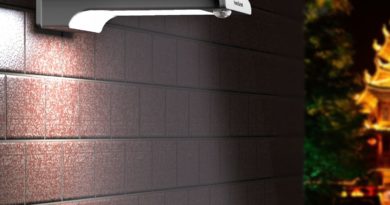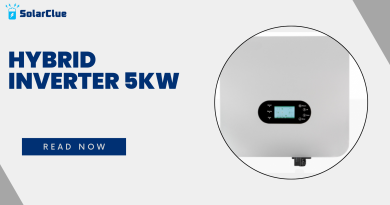what size inverter for 200 watt solar panel
Table of Contents
- 1 Introduction
- 2 Understanding Inverter Basics and Functions
- 3 Calculating Inverter Size Based on Solar Panel Specifications
- 4 The Role of Inverter Efficiency in System Performance
- 5 Pure Sine Wave vs. Modified Sine Wave Inverters
- 6 Additional Features to Consider in an Inverter
- 7 Installing and Configuring the Inverter
- 8 Troubleshooting Common Inverter Issues
- 9 Maximizing Inverter Efficiency for Optimal Performance
- 10 The Impact of Inverter Size on System Cost and Performance
- 11 Future Trends in Inverter Technology
- 12 FAQ Section
- 13 Conclusion
Introduction
Choosing the right inverter for a 200-watt solar panel system is essential for ensuring efficient energy conversion and reliable power delivery. This guide will help you understand the factors that influence inverter selection, including panel wattage, system efficiency, and intended applications. We’ll provide calculations, explain the differences between pure sine wave and modified sine wave inverters, and explore additional features to consider.
Understanding Inverter Basics and Functions
What is an Inverter?
- Definition: An inverter converts the direct current (DC) produced by solar panels into alternating current (AC), which is used by most household appliances.
- Primary Function: The inverter is the heart of the solar power system, enabling the use of solar energy to power everyday devices.
Types of Inverters:
- Grid-Tied Inverters: Designed to work with the electrical grid, these inverters synchronize with grid power and can feed excess electricity back to the grid.
- Off-Grid Inverters: Used in systems that are not connected to the grid, often paired with battery storage.
- Hybrid Inverters: Combine features of both grid-tied and off-grid inverters, capable of operating with the grid, batteries, or both.
Calculating Inverter Size Based on Solar Panel Specifications
Basic Calculation:
- Inverter Sizing Rule: The inverter should be capable of handling the maximum power output of the solar panels.
- Example Calculation:
- For a 200-watt solar panel system:
- Panel Output: 200 watts (DC)
- Inverter Size: A good rule of thumb is to select an inverter that matches or slightly exceeds the total wattage of the solar panel system.
- Recommended Inverter Size: 200-250 watts
- For a 200-watt solar panel system:
Consider System Efficiency:
- Efficiency Losses: Account for potential efficiency losses in the system (around 85-95% efficiency for most inverters).
- Example:
- If the inverter is 90% efficient, a 200-watt panel will produce around 180 watts of usable AC power.
- Inverter Size: It’s still advisable to choose an inverter with at least 200 watts capacity to handle peak outputs.
The Role of Inverter Efficiency in System Performance
Inverter Efficiency:
- Definition: Inverter efficiency refers to how effectively the inverter converts DC into AC power.
- Impact: Higher efficiency means more of the power generated by the solar panels is available for use, reducing energy loss.
Efficiency Ratings:
- Typical Range: Most inverters have an efficiency rating of 85-95%.
- Choosing the Right Efficiency: For a small system like a 200-watt setup, selecting an inverter with at least 90% efficiency is recommended to maximize power output.
Pure Sine Wave vs. Modified Sine Wave Inverters
Pure Sine Wave Inverters:
- Functionality: Produce a smooth, consistent wave of AC power, similar to what’s provided by the electrical grid.
- Suitability: Ideal for sensitive electronics and appliances, such as computers, TVs, and medical equipment.
- Cost: Typically more expensive due to the higher quality of power.
Modified Sine Wave Inverters:
- Functionality: Produce a stepped, approximated sine wave that is less smooth than a pure sine wave.
- Suitability: Suitable for simpler devices like lights, fans, and basic tools, but may cause issues with sensitive electronics.
- Cost: More affordable but may not be suitable for all applications.
Table: Pure Sine Wave vs. Modified Sine Wave Inverters
| Feature | Pure Sine Wave Inverter | Modified Sine Wave Inverter |
|---|---|---|
| Waveform | Smooth, consistent | Stepped, approximated |
| Device Compatibility | Suitable for all devices, including sensitive electronics | Suitable for basic devices, may not work well with sensitive electronics |
| Cost | More expensive | More affordable |
| Energy Efficiency | High | Lower |
| Ideal Use Cases | Computers, TVs, medical equipment, sophisticated electronics | Lights, fans, simple tools |
Additional Features to Consider in an Inverter
Power Surge Capacity:
- Definition: Some inverters can handle short bursts of power higher than their rated capacity, which is useful for devices with high startup power needs (e.g., refrigerators).
- Consideration: Ensure the inverter can handle the startup surge of any appliances you plan to use.
Battery Compatibility:
- Importance: If you plan to add battery storage to your system, ensure the inverter is compatible with batteries and includes a charge controller.
Monitoring Capabilities:
- Monitoring: Some inverters come with built-in monitoring systems or can be paired with external monitors to track performance and efficiency.
Grid-Tie vs. Off-Grid:
- Grid-Tied Systems: If connected to the grid, the inverter should be capable of synchronizing with grid power and handling feed-in tariffs.
- Off-Grid Systems: For off-grid use, ensure the inverter can function independently and manage battery storage.
Installing and Configuring the Inverter
Installation Steps:
- Choose Location:
- Place the inverter in a cool, ventilated area, away from direct sunlight and moisture.
- Mounting:
- Secure the inverter on a wall or other stable surface, following the manufacturer’s guidelines.
- Wiring:
- Connect the DC input from the solar panels to the inverter.
- Connect the AC output to your home’s electrical system or directly to appliances.
- Configuration:
- Set up any necessary configurations, such as system voltage or monitoring settings, according to the manufacturer’s instructions.
- Testing:
- Power on the inverter and check for proper operation. Monitor for any error messages or unusual behavior.
Troubleshooting Common Inverter Issues
Common Issues:
- No Power Output: Check connections, ensure the solar panels are producing power, and verify that the inverter is correctly configured.
- Overheating: Ensure the inverter is in a well-ventilated area and not overloaded. Clean any dust or debris from the vents.
- Error Messages: Consult the inverter’s manual for specific error codes and recommended actions.
Troubleshooting Steps:
- Resetting the Inverter: Sometimes, a simple reset can resolve minor issues. Turn off the inverter, wait a few minutes, then turn it back on.
- Checking Wiring: Inspect all connections for loose or damaged wires. Replace any faulty wiring.
- Consulting Manufacturer Support: If problems persist, contact the inverter manufacturer for technical support.
Maximizing Inverter Efficiency for Optimal Performance
Optimal Placement:
- Ventilation: Place the inverter in a location with good airflow to prevent overheating and efficiency loss.
- Temperature Control: Avoid placing the inverter in areas with extreme temperatures.
Regular Maintenance:
- Dust and Debris: Keep the inverter clean and free from dust and debris to maintain optimal performance.
- Firmware Updates: Check for and install firmware updates to improve performance and fix any bugs.
System Monitoring:
- Monitor Output: Regularly monitor the inverter’s output to ensure it’s operating efficiently.
- Adjust Settings: If necessary, adjust the inverter settings to optimize performance for changing conditions.
The Impact of Inverter Size on System Cost and Performance
Cost Considerations:
- Initial Cost: Larger inverters generally cost more, but they may be necessary for handling larger loads or future expansion.
- Long-Term Efficiency: An inverter that is too small may not handle peak loads, leading to inefficiencies or system failures. However, an oversized inverter may be more expensive than necessary.
Performance Impact:
- Matching Inverter Size: Ensuring the inverter size matches the system’s needs can maximize performance and longevity.
- Future Expansion: Consider whether you may expand your solar system in the future and choose an inverter that can accommodate additional panels.
Future Trends in Inverter Technology
Smart Inverters:
- Advanced Monitoring: Future inverters will likely include more advanced monitoring and grid interaction features, improving efficiency and reliability.
- Energy Storage Integration: As battery technology advances, inverters will become more integrated with energy storage systems, providing greater flexibility and resilience.
Increased Efficiency:
- Higher Efficiency Ratings: Expect to see inverters with even higher efficiency ratings, reducing energy loss and improving overall system performance.
- Smaller, More Powerful Inverters: Advances in technology will lead to more compact inverters that offer the same or greater power capacity.
FAQ Section
- How do I choose the right size inverter for my 200-watt solar panel system?
- Choose an inverter with a capacity that matches or slightly exceeds the total wattage of your solar panel system. For a 200-watt system, a 200-250 watt inverter is recommended.
- What is the difference between pure sine wave and modified sine wave inverters?
- Pure sine wave inverters produce a smooth and consistent wave of AC power, suitable for all devices, including sensitive electronics. Modified sine wave inverters produce a stepped, approximated wave and are better suited for basic devices.
- Can I use a modified sine wave inverter for all my appliances?
- While you can use a modified sine wave inverter for basic devices like lights and fans, sensitive electronics like computers and TVs may not work properly or could be damaged.
- How does inverter efficiency impact my solar system’s performance?
- Higher inverter efficiency means less energy is lost during conversion, resulting in more usable power from your solar panels. Aim for an inverter with at least 90% efficiency for optimal performance.
- What should I do if my inverter isn’t producing any power?
- Check the connections, ensure the solar panels are generating power, and verify that the inverter is correctly configured. If the problem persists, consult the manufacturer’s troubleshooting guide or contact support.
Conclusion
Selecting the appropriate inverter for your 200-watt solar panel system is crucial for maximizing efficiency and ensuring reliable power delivery. By understanding the different types of inverters, calculating the correct size, and considering factors like efficiency and waveform type, you can choose an inverter that meets your needs and budget. As inverter technology continues to advance, future systems will become even more efficient, flexible, and easier to integrate into various applications.



